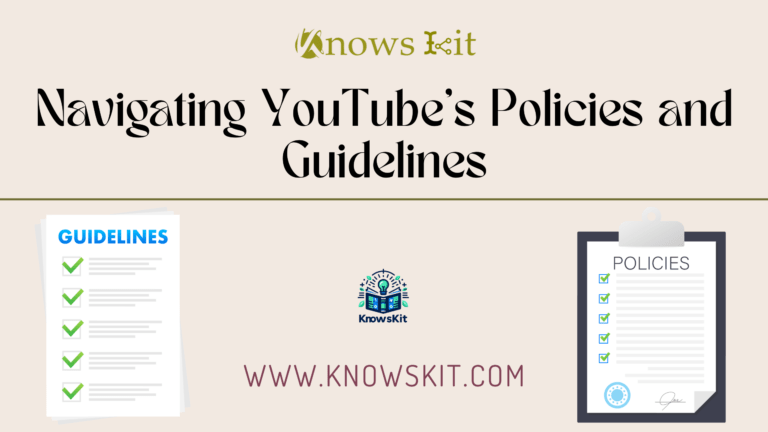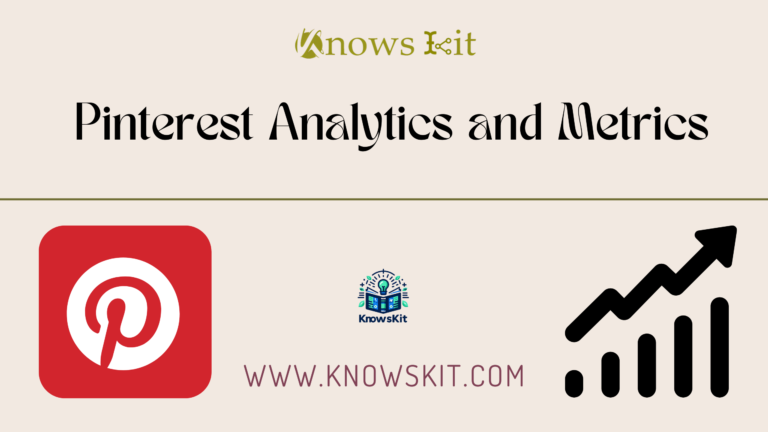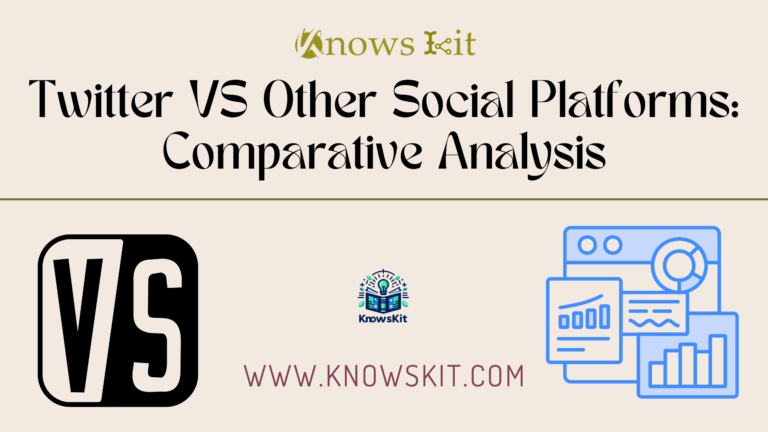In today’s fast-paced digital world, the significance of having a structured approach to social media cannot be overstated. For businesses, influencers, and even personal brands, the ability to plan, execute, and monitor social media content effectively is a game-changer. This comprehensive guide delves into the world of Social Media Calendars, an indispensable tool in the arsenal of any successful digital marketing strategy.
Introduction to Social Media Calendars
![Mastering Social Media Calendar [2024 Exquisite Guide] 2 Organized digital workspace displaying a detailed social media calendar for strategic online marketing.](https://www.knowskit.com/wp-content/uploads/2024/01/strategic-planning-the-heart-of-social-media-success-1024x585.png)
In the realm of digital marketing, staying ahead is not just about being present on social media; it’s about being strategic, consistent, and timely. This is where the concept of a Social Media Calendar becomes a cornerstone for success. A social media calendar acts as a compass in the vast sea of digital content, guiding you to post the right content at the right time on the right platform.
The Essence of a Social Media Calendar:
Imagine navigating through a forest without a map. That’s what managing social media without a calendar is like. With the array of platforms and the volume of content required, a calendar helps you organize, plan, and execute your social media strategy effectively. It ensures you’re not just posting content, but posting content that aligns with your broader marketing goals.
Why a Social Media Calendar is Crucial:
- Consistency: The heart of brand recognition and audience engagement.
- Efficiency: Saves your time and energy by avoiding ad-hoc posting.
- Strategic Alignment: Align each post with your marketing goals, whether it’s brand awareness, lead generation, or customer engagement.
The Basics of a Social Media Calendar
![Mastering Social Media Calendar [2024 Exquisite Guide] 3 Informative infographic detailing various content types for a social media calendar.](https://www.knowskit.com/wp-content/uploads/2024/01/diversity-in-content-key-to-social-media-engagement-1024x585.png)
Delving into the fundamentals of a social media calendar, it’s essential to understand its composition and role in digital marketing. A social media calendar is much more than a mere timetable; it’s a strategic document that guides your entire social media journey.
What Makes Up a Social Media Calendar:
- Content Details: Each entry specifies the type of content, be it a blog post, video, or image.
- Publishing Schedule: Precise timings for when each piece of content will go live.
- Platform Specifics: Tailored strategies for different platforms like Instagram, Twitter, or LinkedIn.
- Engagement Plan: Predefined responses and interaction strategies for post-engagement.
Its Role in Digital Marketing:
A social media calendar is akin to a playbook in sports. It outlines every move, ensuring that your social media efforts are not random but are part of a cohesive and goal-oriented strategy.
Case Study Highlight: Take a look at [Brand Y], which leveraged a well-crafted social media calendar. They witnessed a substantial 40% increase in online engagement and sales, demonstrating the calendar’s pivotal role in amplifying digital marketing efforts.
Why You Need a Social Media Calendar
![Mastering Social Media Calendar [2024 Exquisite Guide] 4 Social Media Calendar](https://www.knowskit.com/wp-content/uploads/2024/01/image-36-1024x611.png)
In today’s digital landscape, having a social media calendar is not an option but a necessity.
Benefits of a Structured Approach:
- Time Management: With a calendar, you’re not constantly brainstorming what to post next. Everything is planned, saving you precious time.
- Consistent Messaging: A calendar ensures that your posts are aligned with your brand’s voice, message, and values.
- Enhanced Engagement: Regular, planned posting keeps your audience engaged, building a loyal follower base.
Case in Point:
Without a calendar, your social media strategy may be reactive rather than proactive, leading to missed opportunities and inconsistent engagement.
Types of Content for Your Social Media Calendar
![Mastering Social Media Calendar [2024 Exquisite Guide] 5 Visual step-by-step guide for creating an effective social media calendar.](https://www.knowskit.com/wp-content/uploads/2024/01/crafting-your-calendar-a-step-by-step-approach-1024x585.png)
Diversity in content is key to keeping your social media strategy fresh and engaging. Your social media calendar should encompass a variety of content types to cater to different audience preferences and maximize engagement.
Exploring Content Diversity:
| Content Type | Description | Best Platforms |
|---|---|---|
| Images | High-quality, visually appealing photos or graphics. | Instagram, Pinterest |
| Videos | Short clips or longer formatted videos. | YouTube, Facebook, Instagram |
| Blog Posts | Informative or entertaining written content. | LinkedIn, Facebook |
| Live Sessions | Real-time interaction with the audience. | Instagram Live, Facebook Live |
| User-Generated | Content created by customers or fans. | All platforms |
| Polls/Quizzes | Interactive content for audience engagement. | Instagram Stories, Twitter |
- Images: High-quality, eye-catching images that reflect your brand’s aesthetic.
- Videos: From short clips to longer, informative videos, they offer dynamic engagement.
- Blog Posts: Share insights, tips, or updates to drive traffic to your site.
- Live Sessions: Q&As, behind-the-scenes, or live events to engage with your audience in real time.
Planning Content Themes:
- Seasonal and Holiday Posts: Align your content with holidays, seasons, or significant events.
- Industry Trends and News: Keep your audience informed with the latest trends and developments.
- User-Generated Content: Showcase reviews, testimonials, or customer photos to build community trust.
Content Calendar Example:
- January: New Year’s goals, winter-themed posts, and industry forecast for the year.
- February: Valentine’s Day specials, customer love stories.
- March: Women’s History Month, highlighting influential women in your industry.
Creating Your Social Media Calendar
![Mastering Social Media Calendar [2024 Exquisite Guide] 6 Social Media Calendar](https://www.knowskit.com/wp-content/uploads/2024/01/image-37-1024x882.png)
Crafting your social media calendar is a blend of art and science. It’s about striking the right balance between creativity and strategic planning.
The Creation Process:
- Identify Your Objectives: What are your primary goals for social media? Increase brand awareness, drive sales, or enhance customer engagement?
- Understand Your Audience: Demographics, preferences, and online behavior will shape your content.
- Content Categorization: Divide your content into categories such as educational, promotional, or community-building.
- Scheduling Strategy: Determine the optimal posting times for each platform.
- Implementation: Start populating your calendar with content, keeping flexibility for spontaneous posts.
Helpful Tools and Tips:
- Content Management Tools: Use platforms like Hootsuite or Buffer for scheduling and analytics.
- Customization is Key: Adapt your calendar to fit the unique rhythm and culture of your brand.
Best Practices for Social Media Scheduling
![Mastering Social Media Calendar [2024 Exquisite Guide] 7 Analytical tools displaying social media performance metrics.](https://www.knowskit.com/wp-content/uploads/2024/01/measuring-success-the-power-of-analytics-in-social-media-1024x585.png)
When it comes to social media, timing can be as crucial as the content itself. Knowing the best times to post and how often can significantly impact your social media success.
Mastering Timing and Frequency:
- Finding the Sweet Spot: Each social media platform has peak usage times. Use analytics to determine when your audience is most active.
- Consistent Yet Not Overwhelming: For platforms like Twitter, multiple posts a day are normative, while on Instagram or Facebook, one to two posts per day might suffice.
Engagement Tactics for a Lively Presence:
| Platform | Optimal Posting Times | Posting Frequency |
|---|---|---|
| 11 AM – 1 PM on weekdays | Once or twice per day | |
| 1 PM – 4 PM on weekdays | Once per day | |
| 8 AM – 10 AM for B2B, 12 PM – 1 PM for B2C | Three to five times per day | |
| 9 AM – 12 PM on weekdays | Two to five times per week | |
| 8 PM – 11 PM on weekends | Five to ten pins per day | |
| TikTok | 6 AM – 10 AM and 7 PM – 11 PM | One to four times per day |
- Interactive Posts: Encourage comments and shares with questions, polls, and calls to action.
- Active Community Engagement: Regularly respond to comments and messages to build a community around your brand.
Expert Insight: “Timing isn’t just about posting when everyone is online, but about creating a rhythm your audience can rely on.” – [Social Media Guru]
Analytics and Adjusting Your Strategy
No strategy is set in stone, especially in the dynamic world of social media. Analytics play a crucial role in understanding what resonates with your audience and what doesn’t.
Key Metrics to Monitor:
- Engagement Rates: Likes, comments, shares, and overall interactions.
- Reach and Impressions: How far your content is spreading.
- Traffic to Your Website: The effectiveness of your social media in driving visitors to your site.
Adapting Based on Insights:
Regularly reviewing these metrics provides insights to fine-tune your content, timing, and approach. For instance, if videos perform better than images, adjust your calendar to include more video content.
Overcoming Common Challenges
![Mastering Social Media Calendar [2024 Exquisite Guide] 8 Illustration of common challenges in social media planning and strategies to overcome them.](https://www.knowskit.com/wp-content/uploads/2024/01/navigating-social-media-challenges-1024x585.png)
Every social media journey encounters its set of challenges. Recognizing and addressing these obstacles is key to maintaining an effective social media calendar.
Navigating Through Content Creation Blocks:
- Idea Drought: It’s natural to hit creative blocks. Keeping an ‘idea bank’ and revisiting past successful content can reignite inspiration.
- Quality vs. Quantity: Strive for a balance. It’s better to post less frequently but with high-quality content than to post mediocre content regularly.
Advanced Strategies for Social Media Calendars
When you’ve got the basics of your social media calendar down, it’s time to explore advanced strategies. These techniques can help you maximize engagement, reach, and ultimately, the success of your social media efforts.
1. Leveraging Holidays and Trending Topics:
- Strategic Planning Around Key Dates: Plan special campaigns or content around major holidays, seasons, or events relevant to your audience. This can increase engagement as users are often more active and responsive to timely content.
- Staying on Top of Trends: Use tools like Google Trends or Twitter’s Trending Topics to stay updated. Incorporating trending topics can increase your content’s visibility and relevance.
- Case Example: A clothing brand could plan a special social media series for Fashion Week, offering daily updates, behind-the-scenes looks, and exclusive interviews, tapping into the heightened interest around the event.
2. User-Generated Content (UGC):
- Encouraging User Participation: Create campaigns or hashtags that encourage users to share their content related to your brand. This not only provides you with additional content but also builds community and trust.
- Contests and Giveaways: These can be effective ways to generate UGC. Ask participants to post with a specific hashtag or tag your brand.
- Showcasing Customer Stories: Share customer testimonials, reviews, or how they use your product in their daily lives. This adds authenticity to your brand and deepens customer relationships.
3. Cross-promotion with Influencers and Brands:
![Mastering Social Media Calendar [2024 Exquisite Guide] 9 Diverse team collaborating on a large social media calendar for effective content planning.](https://www.knowskit.com/wp-content/uploads/2024/01/teamwork-in-social-media-strategy-1024x585.png)
- Collaborations and Partnerships: Partner with influencers or other brands to co-create content. This can help you reach new audiences and add fresh perspectives to your social media feed.
- Joint Giveaways or Campaigns: These can be particularly effective, combining audiences and resources for greater impact.
4. Integrating Interactive and Immersive Content:
- Live Streaming: Platforms like Instagram Live, Facebook Live, and Twitch offer opportunities to connect with your audience in real time. Plan Q&A sessions, live tutorials, or behind-the-scenes looks.
- Augmented Reality (AR) and Virtual Reality (VR): If your budget allows, these technologies offer unique, immersive experiences that can significantly boost engagement.
5. Leveraging Analytics for Content Optimization:
- Deep Dives into Analytics: Regularly review your social media analytics to understand what type of content resonates with your audience. Look beyond basic metrics like likes and shares to more nuanced insights like audience sentiment or content interaction patterns.
- A/B Testing: Experiment with different types of posts, captions, or hashtags to see what works best. Use these insights to refine your content strategy.
6. Planning for Spontaneity:
- Adaptability: While having a calendar is crucial, it’s equally important to be adaptable. Set aside slots in your calendar for spontaneous posts to react to real-time events or trends.
- Quick Response Strategy: Develop a strategy for rapid content creation and approval so you can capitalize on viral moments or trending topics.
FAQ
How Do I Balance Promotional and Informative Content in My Social Media Calendar?
The 80/20 rule is a popular strategy, suggesting that 80% of your content should inform, educate, or entertain your audience, while only 20% should directly promote your products or services. This balance ensures your feed doesn’t become overly sales-focused and maintains audience engagement.
What Are Some Tips for Creating Content for Multiple Social Media Platforms?
While it’s efficient to create content that can be cross-posted, each platform has its own strengths and audience preferences. Tailor your content to fit the platform – for example, more visual content for Instagram, shorter and more dynamic content for Twitter, and professional, detailed posts for LinkedIn. Also, consider modifying the tone and format to suit each platform’s audience.
How Can I Effectively Use Hashtags in My Social Media Calendar?
Hashtags can dramatically increase your content’s reach. Research relevant hashtags for your industry and include them in your posts. Use a mix of popular, niche, and branded hashtags. However, avoid overusing them – a few well-chosen hashtags are better than a long list that can look spammy.
Can I Repost Old Content on My Social Media Channels?
Absolutely! Repurposing content is a smart strategy, especially if it performed well in the past. Update old posts with new information, transform them into a different format, or simply reshare evergreen content. This approach saves time and keeps your content fresh for new followers.
How Often Should I Review and Update My Social Media Calendar?
It’s a good practice to review your calendar monthly. This allows you to analyze what’s working, and what’s not, and make adjustments. Keep an eye on trends, and be ready to pivot or include new content types as needed. Regular reviews ensure your strategy stays current and effective.
What Should I Do if a Scheduled Post Fails to Engage My Audience?
Use it as a learning opportunity. Analyze why the post might not have resonated – was it the timing, content type, or message? Engage with your audience to get feedback if possible. Use these insights to adjust future content in your calendar.
How Do I Handle Real-Time Events or Trends in My Pre-Planned Social Media Calendar?
Always leave room for flexibility in your calendar to jump on real-time events or trends. While it’s important to plan, being able to adapt and respond to what’s happening in the world can make your brand seem more relatable and current.
Is It Necessary to Post Every Day on All My Social Media Channels?
Not necessarily. The quality of your content is more important than quantity. It’s better to post less frequently with high-quality, engaging content than to post every day with lower quality. The ideal posting frequency can vary depending on the platform and your audience.
How Can I Measure the ROI of My Social Media Calendar?
To measure ROI, set clear goals for your social media activities (e
.g., increasing brand awareness, generating leads, boosting sales). Track metrics like engagement rates, follower growth, website traffic from social media, and conversions. Tools like Google Analytics can help track these metrics. Compare these outcomes against the time and resources invested to get a sense of your ROI.
What Are Some Common Mistakes to Avoid When Creating a Social Media Calendar?
Common mistakes include not aligning posts with overall marketing goals, overlooking the importance of content variety, ignoring the specific nuances of each platform, failing to analyze performance data, and not updating the calendar regularly. Avoiding these pitfalls can significantly improve the effectiveness of your social media strategy.
Conclusion
In the digital age, where content is king, a well-structured social media calendar is the scepter that rules it all. It’s not just about posting content; it’s about posting content that resonates, engages, and converts. By now, you should have a comprehensive understanding of what a social media calendar is, why it’s essential, and how to effectively create and utilize one.
Key Takeaways:
- Strategic Planning: A social media calendar is crucial for planning and executing a cohesive online marketing strategy.
- Consistency and Engagement: Regular, well-timed posts help maintain a consistent brand voice and keep your audience engaged.
- Analytics for Improvement: Use analytics to adapt and refine your social media strategy continually.
Final Thoughts:
Embarking on the journey of creating and maintaining a social media calendar might seem daunting, but the rewards are well worth the effort. It’s about striking the right balance between creativity, strategy, and analytics.
Call to Action:
Start today! Take the first step towards transforming your online presence with a well-crafted social media calendar.
Further Learning:
For those seeking to delve deeper, consider exploring [Advanced Social Media Strategies Webinar] or our comprehensive guide on [Next-Level Social Media Marketing].
Reference:-
https://link.springer.com/chapter/10.1007/978-3-319-25313-8_10

![Mastering Social Media Calendar [2024 Exquisite Guide] 1 Visual step-by-step guide for creating an effective social media calendar.](https://www.knowskit.com/wp-content/uploads/2024/01/crafting-your-calendar-a-step-by-step-approach.png)




![Social Media Leads [2024 Exquisite Guide] 22 Social Media Leads [2024 Exquisite Guide]](https://www.knowskit.com/wp-content/uploads/2024/01/emerging-trends-in-social-media-leads-768x439.png)
